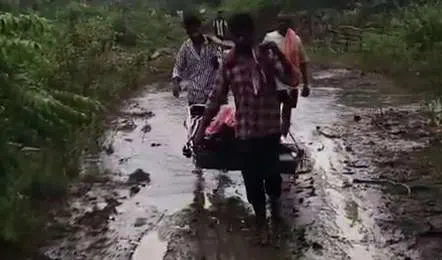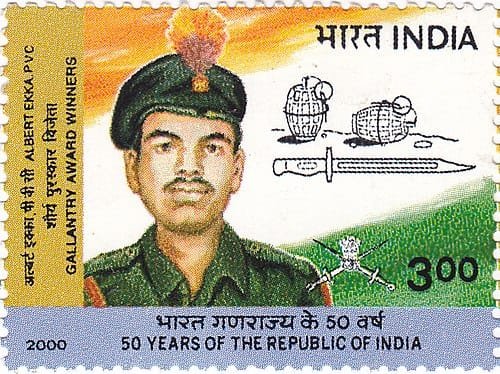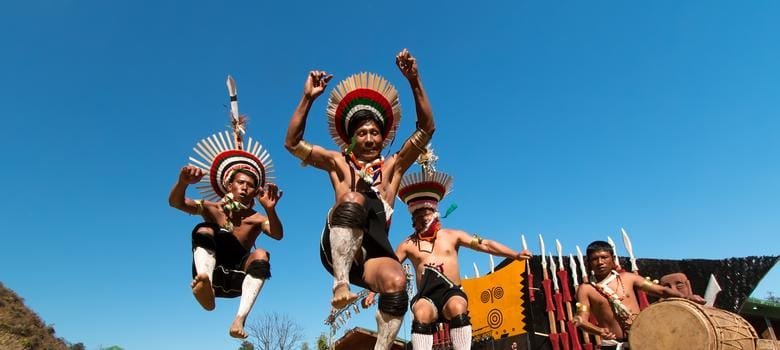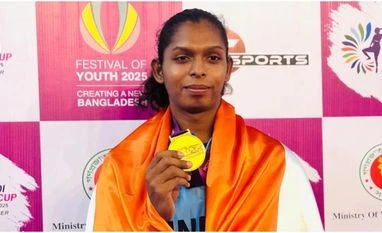India, now counted among the world’s top four largest economies, celebrates its rapid industrial growth, space exploration milestones, and digital revolution. Yet, behind this image of progress lies a harsh reality: tribal and marginalized women in many parts of the country are still forced to deliver babies on roads, forest paths, and makeshift stretchers due to lack of infrastructure, healthcare access, and road connectivity. These incidents raise serious questions about inclusive development and the state’s commitment to basic human dignity.
Documented Cases Across States
Kothagudem, Telangana (September 2025)
In Battigudem village of Cherla mandal, Ravva Bhime, a tribal woman, went into labor. With no road connectivity and an ambulance unable to reach the village, she was carried in a doli (makeshift stretcher) for nearly 6 kilometers. Exhausted and in pain, she delivered her baby on the roadside before she could reach a hospital.
Regapunyagiri, Vizianagaram District, Andhra Pradesh (May 2025)
Fangi Seethamma, a tribal woman, was carried in a doli to the hospital but delivered a baby girl en route. Villagers said poor road connectivity had forced several women into similar risks before.
Anakapalle, Andhra Pradesh (July 2025)
In Losingi, a remote hilltop tribal village, Pangi Sai, 22, had to be carried for nearly 4 kilometers in a doli. She gave birth under a tree on the road because no motorable road exists to her hamlet.
Alluri Sitharama Raju District, Andhra Pradesh (April 2024)
Killo Vasantha from Chidivalasa hamlet experienced severe labor pains. Relatives carried her along a muddy path, but she delivered her baby girl on the roadside before reaching the hospital. Both survived, but the case highlighted systemic neglect.
Nirmal District, Telangana (August 2023)
In Tulsipet village, Gangamani waited for an ambulance for more than four hours. When it failed to arrive due to fuel shortages and poor roads, she delivered her baby on the roadside.
Palghar District, Maharashtra (September 2022)
A 21-year-old tribal woman from Eina village in Jawhar taluka was carried in a doli for 5 kilometers through dense forest. En route, she delivered her baby girl on the forest road. This happened in one of India’s most industrialized states.
Structural Gaps
- Poor Road Connectivity: In Odisha, ~8,300 of 59,971 villages (≈14%) lacked road connectivity in 2025. Many are tribal villages.
- No Mobile Network: Over 1,900 villages in Odisha and 2,400 villages in Andhra’s tribal belt lacked mobile phone connectivity as of 2025. This prevents timely ambulance calls.
- Inadequate Rural Health Centers: PHCs and sub-centres often lack maternity care or remain understaffed.
- Ambulance Shortages: Rural ambulance services fail due to fuel shortages, poor road access, or unsuitable vehicles.
According to NFHS-5, India’s institutional delivery rate stands at 89%, but among Scheduled Tribes it is much lower in certain districts. Home births in tribal communities are strongly linked with higher under‑five mortality (odds ratio ~1.42). This highlights a health emergency masked by economic growth numbers.
Policy Framework & Gaps
- Pradhan Mantri Gram Sadak Yojana (PMGSY): Aimed at all‑weather rural roads, but many tribal villages remain unconnected.
- Road Connectivity Projects for LWE Areas (RCPLWEA): Approved over 32,000 km of roads for tribal/insurgency zones, but execution lags.
- PM Janjati Adivasi Nyaya Maha Abhiyan (PM-Janman): Targets Especially Vulnerable Tribal Groups (PVTGs) with infrastructure schemes, but rollout is slow.
- Janani Suraksha Yojana & JSSK: Provide maternity benefits and free services, yet fail when there’s no access to health centres.
The contradiction is stark: funds and policies exist, but on the ground, women are still carried in stretchers and forced to deliver in unsafe conditions.
The Way Forward
- Build All-Weather Roads in Tribal Belts: Prioritize completion and monitoring of PMGSY and RCPLWEA projects.
- Strengthen Ambulance Services: Terrain‑adapted vehicles, community ambulances, and stretcher teams for remote areas.
- Upgrade Health Facilities: Ensure PHCs/sub-centres in tribal belts have birthing facilities, skilled staff, and emergency care.
- Expand Connectivity: Mobile towers and satellite communication to call for help in emergencies.
- Community Engagement: Train local midwives, ASHAs, and birth attendants; involve tribal communities in planning.
India’s ambition to be a global economic power is overshadowed by these stark realities. When tribal women are still giving birth on the road in one of the world’s largest economies, it reveals a contradiction between GDP numbers and human development. Until the nation ensures safe motherhood, accessible healthcare, and dignity for its most vulnerable citizens, true progress will remain incomplete.
A nation’s greatness is measured not only by its GDP but by how it treats its most marginalized. In India’s case, tribal women delivering babies on the roadside should be a wake-up call.












